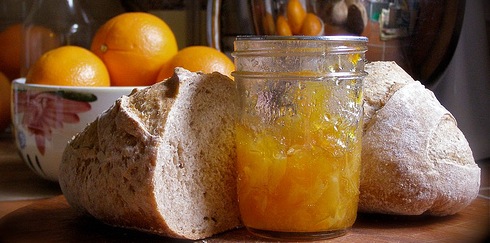Is there a useful definition of terroir that has any real meaning for single malt Scotch whisky?
The concept of terroir was made famous by the French in marketing their wines (even though the Spanish had created local growing regions over 100 years earlier). This term is used to designate the unique qualities of a place as it affects the growth and final character of the grapevines planted there, their harvest of wine grapes, and the wine that results from that year’s harvest.
Terroir is the unique fingerprint of a unique local place (even micro-plots within the same vineyard). It reflects its soil composition and chemistry, climate, weather, sun latitude, farming practices, craft, culture and history. Terroir tells how well a wine “expresses” the terroir of its constituent grapes, and enables the drinker to judge it unfavorably if he or she cannot discern any character indicating where it was made.
Yet when it comes to fine whisky, and here the focus will be on single malt Scottish drams, drinkers are unlikely to hear a description of the local terroir where the whisky was made. They are more likely to find descriptions based on flavor profiles that refer to qualities such as smokiness, honey, heather, nuttiness, peat, brine and grassiness.
All labeled single malt Scotch whisky must be made by a single distillery in Scotland. It must meet all legal requirements of being classified as a single malt offering (which may be a blend of selected spirits distilled at different times at that one distillery).
It is well known that most of the complex flavor of a single malt whisky comes from the interaction of the spirit in wood barrels through ageing for several years.
Does a fine spirit that derives anywhere between 2/3rds and 3/4ths of its final flavor from aging in wood casks have any right to claim it is in any real way influenced by its terroir? And could we taste any real difference?
This question was put to the test at a recent tasting at the Dillard Room in Seattle, Washington. Four offerings from Laphroaig were hosted by Simon Brooking, Master Ambassador, and Vicky Stevens, Master Blender. Sampled were Laphroaig’s classic Ten year old, Quarter Cask, Triple Wood, and Select (a new offering).
A lot of information can be gathered about these and other offerings, including excellent tasting notes and the colorful history of Laphroaig (founded in 1825 on Islay, Scotland), from the official Laphroaig website at www.laphroaig.com.
The tasting revealed that there was a recognizable flavor character underlying the individual flavor profiles across all four drams. This unique Laphroaig character forms the backbone of the distinct Laphroaig family tree, and is immediately recognizable within each dram with its combination of rich peat, hint of honey, briny iodine and nutty toasted barley.
While this character resembles other neighboring fine Islay whiskys such as Lagavulin, Ardbeg and Bruichladdich, as one might expect since they share many environmental similarities, nonetheless it is also distinct and has a unique and memorable quality all its own.
This back-to-back tasting confirmed this uniqueness as very real. Perhaps part of the secret to its unique character is the fact that Laphroaig not only uses local water from its glen but also is one of the only distilleries in Scotland using its own locally grown barley.
Combined with traditional small copper pot stills which are used to make the spirit and on-site ageing in select wooden casks in the cool and damp gray Scottish salty coast climate, one can identify the local Islay coastal terroir which is given fine expression in the various offerings from the Laphroaig single malt whisky family tree.
Even though much of the final whisky flavor is imparted through interaction with wood barrels in ageing, a unique family profile can still be identified. This profile is in part grounded in the specific local geologic, environmental and cultural history of the unique land, people and place where the barley is grown and the whisky is made.
The character of the local water, peat and influence of the nearby salty sea also add to the defining character of a particular distillery style. This unique family quality of Laphroaig’s character gives rise to some unexpected wonderful pairings with foods. For example, in addition to savoring it neat, the classic Ten Year Old pairs perfectly with Totten Island Virginica Oysters with their strong complex briny flavor profile.
Hence an expanded understanding of terroir is helpful both in appreciating the many offerings of a single distillery and in being able to identify the underlying family character, style and history they all have in common.
This local terroir based family identity is unique, recognizable and contributes to the present expression of the many complex qualities we value and prize in the resulting single malt Scotch whiskies.
While the individual flavor profiles of the four representative offerings from Laphroaig were easily identifiable, one can also recognize that they all belong to the Laphroaig family and share certain defining qualities we associate with that brand.
These include a unique combination of the local peat, smokiness from roasted local barley, brininess and iodine from proximity to the sea and an overall richness with balancing sweet notes from locally grown grains and cool wood barrel ageing.
One can instantly recognize a member of the long lineage of the Laphroaig family of fine Islay whiskies, and their fine expression of a unique terroir.
Fine whisky is not all in the wood. It is possible to define an authentic expanded notion of terroir which is expressed in unique styles of single malt Scottish distilleries and their family of offerings.
A definable regional single malt terroir gives rise to regional style similarities amongst unique whisky brand families, each with their own unmistakable styles.
And the entire world is that much the better for it.
Your Culinary World Copyright Ana Kinkaid/Peter Schlagel 2014






































